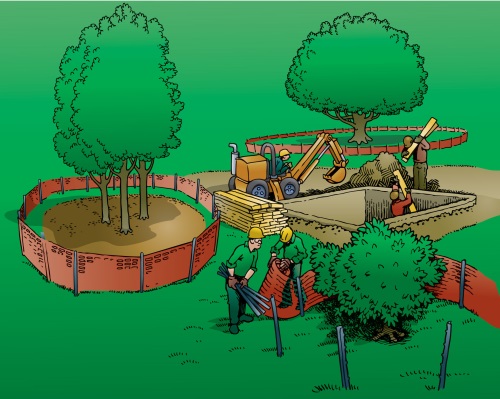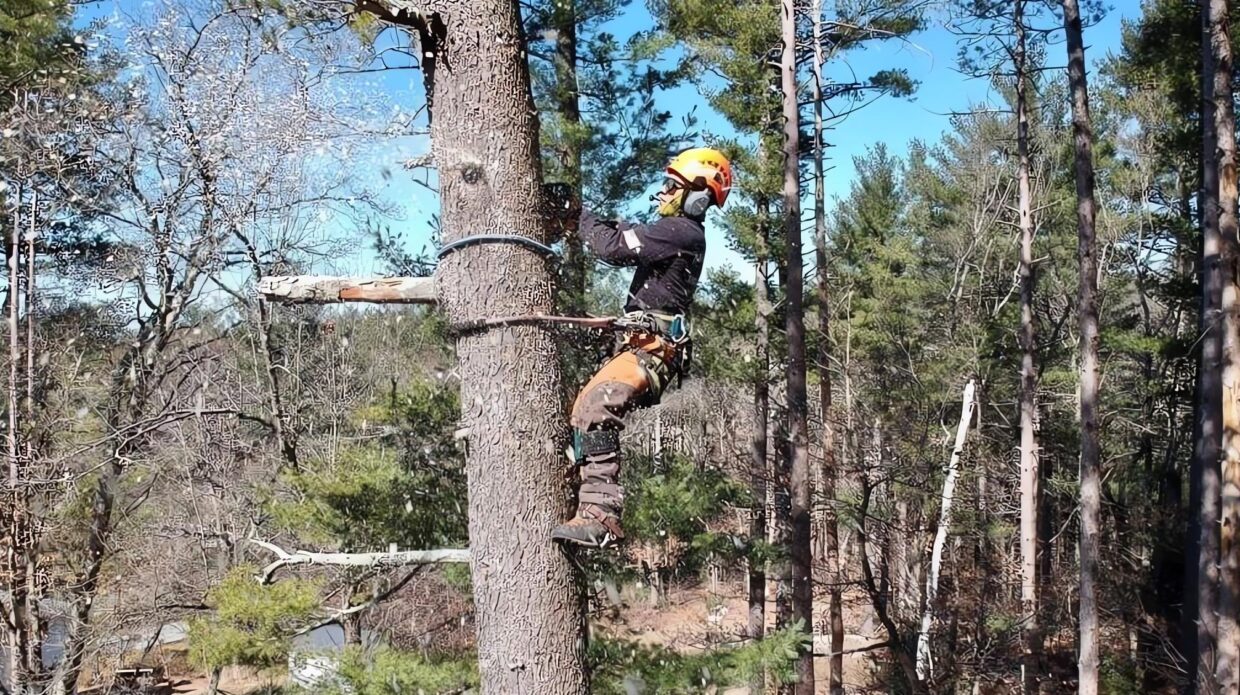Trees are an integral part of our environment, providing shade, beauty, and countless benefits. However, they can also pose risks, particularly when they become a hazard due to disease, damage, or structural issues. To ensure the safety of your property and the people who inhabit it, it's essential to conduct tree risk assessments. In this article, we'll explore the significance of tree risk assessments in identifying tree hazards and mitigating potential dangers.
Understanding Tree Hazards
Tree hazards can manifest in various ways, and it's crucial to recognize them early to prevent accidents or property damage. Common tree hazards include:
- Dead or Dying Trees: Trees that have lost their vitality or are in advanced stages of decay are more likely to break or fall.
- Diseased Trees: Diseases can weaken a tree's structural integrity, making it more susceptible to wind or storm damage.
- Structural Issues: Poor branching structure, co-dominant leaders, or unbalanced growth can result in weak attachment points that are prone to failure.
- Root Problems: Compromised root systems, often caused by construction damage or soil compaction, can lead to a tree becoming unstable.
- Leaning Trees: Trees that lean significantly can pose a risk of falling in the direction of the lean.
- Branch Failures: Overloaded or weak branches can break off, causing damage or injury.

The Role of Tree Risk Assessment
Tree risk assessment is a systematic process designed to evaluate the health, structural integrity, and safety of trees. Its primary goal is to identify potential hazards and determine the level of risk they pose. Here's how tree risk assessments play a pivotal role in mitigating tree-related hazards:
1. Early Detection
Regular tree risk assessments enable the early detection of issues that might not be apparent to the untrained eye. This can include the presence of diseases, structural problems, or signs of stress in a tree. Detecting these issues at an early stage allows for timely intervention, reducing the risk of severe damage or tree failure.
2. Risk Evaluation
Tree risk assessments provide a structured framework for evaluating the level of risk posed by a particular tree or group of trees. Trees are categorized based on the potential for harm they present. This risk assessment considers factors such as location, tree species, tree condition, and the presence of targets (e.g., structures, walkways, or roads). Understanding the level of risk helps property owners make informed decisions about tree management and mitigation.
3. Informed Decision-Making
Once the level of risk has been determined, property owners and arborists can make informed decisions about how to manage the trees. Low-risk trees may only require routine. A tree risk assessment also provides the basis for prioritizing which trees need immediate attention and which can be addressed in due course, helping to allocate resources effectively.
4. Preservation and Mitigation
While removing a hazardous tree is sometimes the only option, tree risk assessments also guide arborists in developing strategies for preserving valuable trees that pose a risk. These strategies may involve pruning to remove hazardous branches, installing support systems like cables and braces, or implementing measures to improve the tree's overall health.
5. Documentation and Liability
Conducting regular tree risk assessments and maintaining proper documentation is crucial for liability and insurance purposes. In the event of an accident or property damage caused by a tree, having a documented history of tree assessments and maintenance can demonstrate due diligence in managing tree-related risks. This can be essential in reducing potential liability.
6. Peace of Mind
Knowing that your property is regularly assessed for tree hazards can provide peace of mind. It can alleviate concerns about the safety of your family, visitors, and structures on your property. This proactive approach to tree management fosters a sense of security and well-being, allowing you to enjoy your outdoor space without unnecessary worries.

The Tree Risk Assessment Process
A thorough tree risk assessment involves a combination of visual inspections and specialized tools. While it is possible for property owners to conduct basic visual assessments, it is recommended to consult a certified arborist or tree care professional for a comprehensive evaluation. Here is a brief overview of the tree risk assessment process:
- Visual Inspection: This initial step involves visually inspecting the tree from top to bottom. Arborists look for signs of damage, disease, decay, or structural issues. They also assess the tree's overall health and vitality.
- Climbing Inspection: In some cases, an arborist may need to climb the tree to get a closer look at its canopy and branches. Climbing inspections can reveal hidden issues that may not be apparent from the ground.
- Soil and Root Examination: The assessment may also include an examination of the tree's root system and the soil in which it is planted. Issues like root rot, compaction, or damage can be identified during this phase.
- Use of Specialized Tools: Arborists may employ specialized tools such as resistograph drills or sonic tomographs to assess the structural integrity of the tree's wood. These tools can detect internal decay or weaknesses that are not visible to the naked eye.
- Documentation: A thorough tree risk assessment includes detailed documentation of the tree's condition, any identified hazards, recommended actions, and risk ratings. This documentation serves as a valuable reference for future assessments and management decisions.
Conclusion
Tree risk assessment is a critical component of responsible tree care and property management. By identifying tree hazards and assessing the level of risk, property owners can take proactive steps to protect their property and ensure the safety of those who use it. Whether it's removing a hazardous tree, implementing mitigation measures, or simply conducting routine maintenance, tree risk assessments help property owners make informed decisions that promote both safety and the preservation of valuable trees in their outdoor spaces. When in doubt, consult a certified arborist or tree care professional to ensure that your tree risk assessments are conducted thoroughly and accurately. It's an investment in the well-being of your property and the people who enjoy it.
Website:- https://salastree.com/
Google Map:- https://g.page/r/CeHUF3QQpMChEBM/
Contact Information
Salas Tree Service
Address:- 2712 Preston Lake Dr, Tucker, GA 30084
Phone:- (678) 558-4863
Email:- info@salastree.com
External Links:-